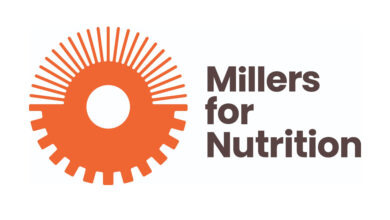K Rathnam talks about the future of small stakeholders in the Indian dairy sector
The future of dairy in India is dependent on modernising infrastructure and modernising the sector technologically, says K Rathnam, the CEO of Milky Mist.

Crisis situations present opportunities for reform. Through a series of initiatives, the Centre has ushered in reforms in a variety of sectors, including agriculture. The backdrop of Covid-19 has provided stakeholders with an opportunity to rethink dairy. This will necessitate changes, decisive action, and a different growth trajectory for the industry, despite the fact that India is currently the world’s largest milk producer.
“The livestock sector, and specifically dairy, must play a larger role in the prime minister’s goal of doubling farmer income by FY23,” says K Rathnam, dairy industry expert and the CEO of Milky Milk. “Furthermore, promoting dairy will result in a more equitable income, which should be recognised,” he adds.
Milch animal ownership is far more equitable than land ownership. Approximately 85% of all farmers are small and marginal. While they own approximately 47% of farmland, they own approximately 75% of milch animals. In India, milch animal productivity is about one-eighth of the global average. Land prices in India are extremely high, making large dairy farms unviable. As a result, small and marginal farmers will continue to dominate dairy farming in India.
According to estimates, 48% of milk produced is consumed by dairy farmers, while 52% is marketable. According to a private agency study, 20% of the total surplus is processed in the cooperative sector, 30% by branded private dairy companies, and the remainder by the unorganised sector (milk for sweet shops, loose milk, etc). Uttar Pradesh, Andhra Pradesh, Rajasthan, Gujarat, Maharashtra, Madhya Pradesh, Haryana, and Punjab account for 65% of total milk production in the country. The processing capacity is highly skewed when measured in terms of milk chilling infrastructure (cooperatives), with Gujarat alone accounting for 46% of this. “Dairy’s future growth must come from newer areas, with modernised technology suited to small dairy farmers,” says K Rathnam, the CEO of Milky Mist.
The dairy market encompasses both the harvesting and processing of animal milk products. Cows, goats, buffaloes, and camels are the major sources. Consumers are becoming more interested in value-added dairy products such as cheese, probiotic drinks and yoghurt. The Indian dairy market is expanding due to consumer preferences for high calcium content, as well as other vital nutrients, which has made it an essential part of the daily diet.
Milk dominates the dairy market, accounting for 64% of the total, followed by traditional dairy products and the modern value-added dairy products market. During the pandemic, the demand for UHT milk fuels retail milk consumption as well as premium milk packs. Health enthusiasts and the rising premiumization trend among consumers are driving an increase in demand for premium retail packaged goods such as antibiotic-free milk, and farm to home milk brands.
However, most cooperative milk processing plants are currently outdated and in need of expansion or modernisation. These plants’ technology may not be as energy efficient as available modern technologies. An investment of Rs 5,000 crore is expected to increase capacity by 75 lakh litres per day, modernise capacity by 75 lakh litres, and milk processing capacity by 12.5 crore tonnes per day. The implementation of Automatic Milk Collection Stations and Bulk Milk Cooling Units, as well as the modernisation of the procurement process, are key drivers for organised milk marketing infrastructure. “Modern procurement processes also aid in the production of hygienic milk, bolstering state efforts to promote an export-oriented dairy industry,” informs K Rathnam, the CEO of Milky Mist and Dairy industry expert.
On the production and productivity front, gaps in artificial insemination (AI) and breeding services must be filled—200 million doses of AI are required to cover at least 60% of the breedable population, but only 115 million doses are produced. With more land being used for non-agricultural purposes, there is a real supply constraint in terms of feed and fodder resources! The percentage of supply to demand for concentrates, dry fodder, and green fodder is estimated to be 39%, 36%, and 57%, respectively. K Rathnam mentions that the problem is exacerbated by the spread of the small stakeholder dairy model. There are two credit challenges: the flow of credit relative to potential, and the mismatch between regional flow of credit to the AH sector and livestock resources.
Moreover, technological advancements have created numerous opportunities for the dairy industry that must be mainstreamed and leveraged to increase productivity. The Internet of Things (IoT) and data analytics must be used to digitise milk production, procurement, processing, and marketing. This digitisation could focus on herd management solutions, smart milk procurement, cold chain management, livestock insurance, fintech for dairy farmers for seamless transactions, and so on.
The future of dairy in India is dependent on supporting small stakeholder dairy farmers, promoting the sector in newer areas, creating (and modernising) dairy infrastructure, filling fodder gaps, and giving the sector a technological facelift. K Rathnam, the doyen of the Indian dairy industry and CEO of Milky Mist, lives by the values of integrity, dedication, and commitment and always champions the cause of the small stakeholder dairy farmer. Time is ripe to take the take the dairy cart forward on a fast lane!








